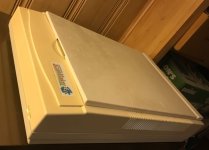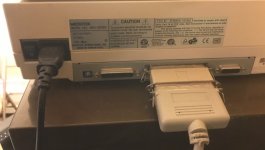Our first scanner, a Microtek Scanmaker E6 from circa 1996, still appears to work fine, but I can’t get the software to see it. Windows XP says a camera is newly connected, but can’t automatically find a driver for it.
The scanner has on its rear a SCSI port, DB25 port, and a DB15 port. I am connecting to the SCSI port, converting to parallel, and plugging it into the parallel port of the AMD Athlon 2100 MHz. with Windows XP.
I have tried 3 different pieces of OEM software. They ask how it is connected and I say parallel port. They all say there is no scanner connected.
The scanner has on its rear a SCSI port, DB25 port, and a DB15 port. I am connecting to the SCSI port, converting to parallel, and plugging it into the parallel port of the AMD Athlon 2100 MHz. with Windows XP.
I have tried 3 different pieces of OEM software. They ask how it is connected and I say parallel port. They all say there is no scanner connected.


